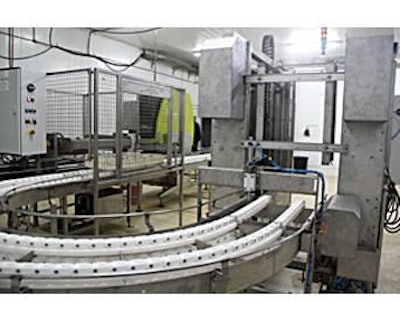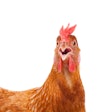
Tunisia's Poulina Group, founded in 1967, is active in a number of areas: tourism, real estate, steel production, wood and agriculture. The company, however, started with poultry production and continues to be the leading poultry producer in the country.
In the agricultural sector, Poulina has operations ranging from feed production to poultry processing. It is active in both the chicken and turkey markets, from hatching and production of day-old chicks to slaughtering and processing. Last year, the poultry division, which accounts for 40 percent of the total business, recorded sales of DZD544 million (US$328 million).
The Poulina Group has undergone a number of changes over recent years. The poultry division is currently benefitting from an expansion program, which includes construction of a fifth hatchery in 2014, and has seen a significant investment and modernization at its Cedria hatchery since June 2013.
Hatchery investment
Les Grands Couvoirs de Poulina hatchery, commonly known as the Cedria hatchery, is one of the group's four hatcheries. Located in the village of Borj Cedria, which is about 20 km from the capital Tunis, the hatchery started operations in 1979. This year has been the focus of a number of investments.
The site has seen a modernization of the equipment and processes that it uses, and this in turn has allowed its managers to gain a deeper insight into the efficiency and quality of its suppliers and so made planning easier.
The Cedria hatchery processes 75 million eggs per annum and works with Hubbard, Aviagen and Cobb breeds, sourcing eggs from the group's own breeder farms.
Of these 75 million eggs, 67 million are retained by Poulina for use at the Cedria and SFAX hatcheries, while the remainder is sold to other hatcheries. Of the eggs hatched on site, 25 million are sold at one day old, with the remainder retained by the group, reared, slaughtered and processed.
Expansion, waste minimization
For the Cedria hatchery, there was a need to increase capacity but without increasing transfer time. Some of the processes employed did not allow the site to run as efficiently as it could and resulted in waste in a number of areas.
Poulina's hatcheries director, Noureddine Tirellilil, explains: "As well as generally increasing our capacity and quality, we were keen to address a number of specific issues at our Cedria hatchery.
"Waste management was one of the key factors for us -- in particular, the problem of clear eggs. Around 10-15 percent of our eggs were just entering the waste stream as we had no way of removing them accurately during the candling process."
Tirellilil continues, saying the company was also keen to monitor any dead embryos for statistical analysis of the group's farms' productivity, allowing forecasting of hatch for commercial planning.
Poulina has installed a new transfer line at the hatchery, new candling equipment and a transfer and hatcher basket stacker. The group has worked with iD projects on the design and build of the new resources. Prior to the investment, Poulina was manually candling only 20 percent of the production line, mainly to collect data for hatch prediction.
The new candling equipment is capable of processing 65,000 eggs per hour, has 100 percent accuracy in detecting infertile embryos and has in excess of 90 percent accuracy in the detection of dead embryos. It gives Poulina the data needed to develop insights into future delivery requirements and egg-to-chicken conversion rates. Very specific data on the fertility of flocks from all supplier farms can now be gathered.
Poulina has also found that using an automated system has helped to reduce labor needs in some areas such as the handling and processing of eggs, which has freed up workers for other activities like cleaning and vaccination.
Separating the infertile eggs from the dead in shells was a challenge and, to date, early feedback from Poulina has been very positive. The hatchery's clear eggs are now treated by the Poulina group for use as fertilizer and pet food, instead of being added to the waste stream. This essentially means that the significant percentage of clear eggs that was being simply thrown away is now providing a financial benefit to the company.

















